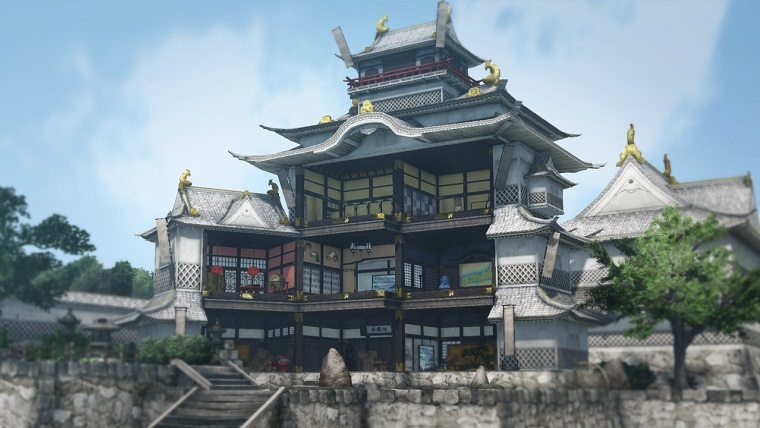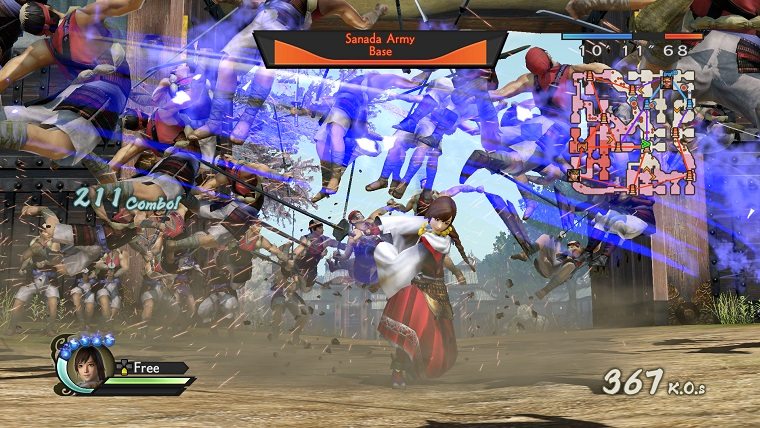The Warriors franchise and its formula is pretty common knowledge these days, with the hack ‘n’ slash-focused battles where you mow down hundreds of enemies like they’re toy dolls and aim to wipe out the enemy leader being the bread and butter of the series. Hyrule Warriors most recently injected a new breath of life when it took the series’ formula and mixed it with the characters and setting of The Legend of Zelda, creating what many believed to be the best Warriors game yet. However, the Empires games in the Warriors series add quite a bit of strategy and roleplaying elements to the scenarios, and Samurai Warriors 4: Empires is certainly unique in what it offers compared to the most recent games.
Empires’ core is ripped straight from Samurai Warriors 4-II, which isn’t even that old of a game at this point. All of that game’s 56 characters are present in Empires, with no additions other than allowing for female generics to enter the fray. Thus, if you’ve played Samurai Warriors 4-II already and are going into this one solely for more hack ‘n’ slash gameplay, you’re likely to burn out on it quickly. While this may seem disappointing for some people, it’s what Empires does with its gameplay outside of the combat that really sets it apart.
Empires essentially lets you choose one from a list of many different clans in feudal Japan, and your mission is to see them thrive and conquer the others. You’ll start out with one small territory, though as time goes on and you win more battles you’ll slowly start to see your influence grow throughout the nation. More people will want to join your army because you’re the strongest, and battles that pit you against the weaker territories will gradually become much easier to handle as your troop strength increases. Other clans will also be rising to power, however, which result in epic clashes further down the line.

The main difference that Empires brings to the table is its politics phase, which comes with a pretty steep learning curve at first. As the leader of your empire you’re tasked with appointing magistrates to focus on things like military, personnel and development of your empire, and you need to make sure you pick people who are fit for the specific jobs and are compatible with the people they’ll be working with. From here you’ll be using each of the four seasons of the year to develop your empire to produce more supplies for battle, bolster your military to ensure they stay healthy and their numbers increase, and deepen the relationships between your officers to improve their conditions.
There are a lot menus and sub-menus to deal with in the midst of all this, which can definitely be overwhelming at first and will definitely turn off some people. The game could do a better job of easing you in to some of these mechanics rather than just dumping them all on you, as a lot of them are important but are glossed over a bit. However, if things get too complicated you can seek advice from your second-in-command and even delegate tasks if you’d rather just get on with the actual gameplay.
It’s in Samurai Warriors 4: Empires combat gameplay where little has changed, though that’s not necessarily a bad thing. You’ll still be taking on several officers and their troops in battles that are generally 10 or so minutes filled with non-stop action, with the square and triangle buttons being your best friends. Your goal is always to make your away across the map and capture enemy territories, weakening them so that when you get to the main stronghold you have a better chance of taking out their leader. It’s all still a lot fun and results in some truly tense battles, especially when you find yourself taking on an army that matches your own troop strength.

It’s what you do in the politics phase of the gameplay that directly impacts how the actual combat of the game plays out, as having more gold will allow you to send more officers into the combat and having more supplies allows you to battle for longer periods of time. There may be times where you have to sit out a round of combat because your resources are low and it would put you at a disadvantage in battle, though enemies will sometimes take advantage of this and invade you and force you to fight in a weakened state. Random stat buffs and debuffs will happen as seasons change, which can quickly turn the tide for or against you. You’ll also have to choose which clans to place your officers in at any given time, with some of your clans being stronger than others and resulting in strong and weak points in your empire. It’s these management aspects of the game that are a lot of fun to tinker with, as you see their immediate impact within the actual battles.
The Verdict
At the end of the day, your enjoyment of Samurai Warriors 4: Empires will largely depend on whether or not you are tired of the Warriors gameplay yet. While the empires part of the formula adds in some nice strategic and role playing elements, it’s not likely to win people over due to the initial complexity of it. Still, there is no questioning that the core of what makes this series tick is still alive and well, and if you’re hungry for a hack ‘n’ slash game with a bit more meat on its bones then this is the game for you.











Published: Mar 11, 2016 11:53 am